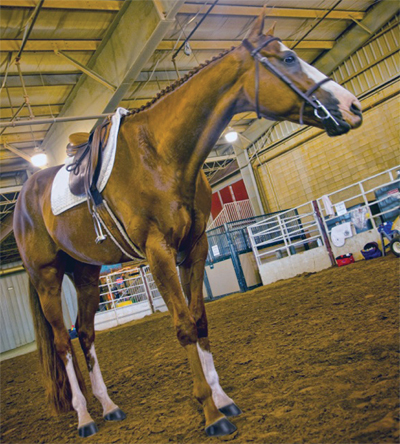 Is bigger really better?
Is bigger really better?
That’s long been the question at the center of Hunter Under Saddle competition. From weekend shows to World Championship events, owners, riders and spectators have had sometimes heated debates over whether it is necessary to have a 17-hand-plus mount to be called to the top of a judge’s line up.
Trainers say they look for an athlete that can compete successfully and size does tend to be a factor in that decision. But making a good decision also requires an understanding of what the standards are for the class as, they insist, judges will base their selections on those standards.
So what is the real answer? Is there a size standard?
The American Quarter Horse Association, American Paint Horse Association, Appaloosa Horse Club and the National Snaffle Bit Association have nearly identical descriptions of the standard for the Hunter Under Saddle class. Free flowing movement, proper cadence and long, low strides describe what is ideal in the class. Each association places emphasis on the quality of movement and attitude of the horse. No reference is made by any regarding the size a horse should be but rather that horses should be suitable to purpose. It is clear by reading the handbook for each association that movement should be the focus rather than size.
AQHA Senior Director of Judges Alex Ross for AQHA says “Although a horse may never be shown in an over fence class, a Hunter Under Saddle horse should move with long, ground covering strides at each gait simulating the movement of an over fence horse as the rulebook states. Size should not matter or be a priority. A judge should focus more on the movement, style, and expression of the horse according to what is in the class.”
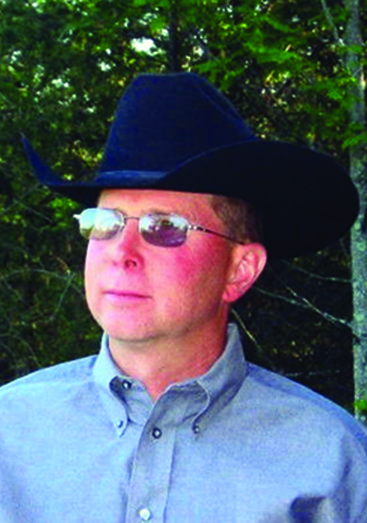 Mike Hay, of Pilot Knob Quarter Horses, in Pinnacle, North Carolina, has been an AQHA judge for 30 years and most recently judged the 2012 AQHA World Championship Show.
Mike Hay, of Pilot Knob Quarter Horses, in Pinnacle, North Carolina, has been an AQHA judge for 30 years and most recently judged the 2012 AQHA World Championship Show.
“For several years we, as an industry, sacrificed cadence and conformation for height,” he says. “I believe this ‘taller is better’ trend has peaked and exhibitors realize that quality of movement will win most of the time. I personally give no consideration to size. Suitability for purpose and quality, cadenced movement is the goal.”
Beth Case agrees. As assistant trainer at Highpoint Performance Horses in Pilot Point, Texas, she has trained and exhibited numerous World, Congress and futurity champions of many breeds. She said there may be some pressure to breed for size but not over movement and that in today’s show climate, she sees a lot of different size horses competing successfully.
“I’m not really sure there is a trend in size right now,” she says. “I think by now most people know movement is way more important as long as the horse isn’t tiny.”
Case said that it is not accurate to say that all Hunter Under Saddle contenders have to be 17-hands tall to win.
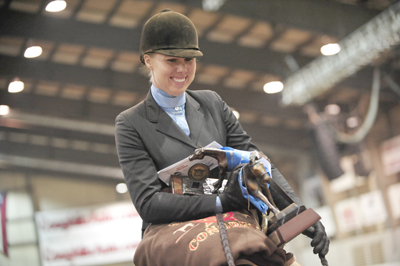 “Really, I think anything over 15.3 (hands) is big enough if they are great movers,” she explains. “There’s more to it though. Pretty helps a lot as does a good expression – looking happy. And broke. There are times when I see a big, pretty, great moving horse, and I think wow that could be a really nice horse if someone would just get it broke.”
“Really, I think anything over 15.3 (hands) is big enough if they are great movers,” she explains. “There’s more to it though. Pretty helps a lot as does a good expression – looking happy. And broke. There are times when I see a big, pretty, great moving horse, and I think wow that could be a really nice horse if someone would just get it broke.”
udy Davis, is among the top AQHA Hunter Under Saddle Riders in the country. She and her husband, Wayne, own and operate their own training facility in Reddick, Florida.
She says the trend is actually getting away from the idea that the contenders have to be giants, especially when considering the futurity horses.
“Although there are always exceptions, seldom do 17-hand, 2- or 3-year-olds make competitive Hunter Under Saddle futurity horses,” she says. “The bigger they are, the longer it takes them to learn to control and organize their bodies. Trying to force them to do something they are not yet capable of doing leads to soundness problems, both physically and mentally.”
 Davis says she is a big believer in suitability-to-purpose, as far as the Hunter Under Saddle horses go.
Davis says she is a big believer in suitability-to-purpose, as far as the Hunter Under Saddle horses go.
“I have a long leg, so I feel I look best on a horse that is at least 16 hands and has a deep heart girth,” she says. “ We try to put shorter riders on our smaller futurity horses, as it makes for a more balanced over-all picture.”
Regardless of size, Davis wants her mounts to have physical balance and substance, quality movement in all gaits, and a willingness to perform.
“I prefer to show a bigger Hunter Under Saddle horse as close to the rail as possible,” she explains. “It’s big enough to stand out in the crowd, and usually the horses showing in the middle of the arena race by, leaving me with a clear pass in front of the judges to really show off my horse. A smaller horse sometimes has to show on more of an inside track in order to be seen by the judges and not get covered up by the rest of the class.”
Davis says she thinks it’s difficult for the judges to see a horse at its best when it is right on top of them.
“So I really make an effort to give my horse as much space as I can,” she explains.
Regardless of the size of the horse she is showing, Davis tries to set her pace with the class.
“If it’s a slower paced class, I’m not going to race around the ring and trot my horse off its feet,” she explains. “If it’s a faster pace class, I’ll ask my horse to lengthen its stride and move a bit more aggressively, without getting into that race mode.”
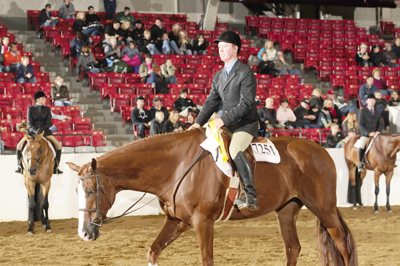 Keith Miller, owns and operates his own training facility in Reidsville, North Carolina. He has been an AQHA World and Reserve World Champion in Senior Hunter Under Saddle and says bigger does not automatically mean better.
Keith Miller, owns and operates his own training facility in Reidsville, North Carolina. He has been an AQHA World and Reserve World Champion in Senior Hunter Under Saddle and says bigger does not automatically mean better.
“I personally think too much emphasis can be placed on a horse’s size. To me, more attention needs to be placed on quality of movement, at both the trot and canter,” he says.
Miller likes horses that can cover ground easily and smoothly at the trot.
“My favorite horses canter slowly, but cover ground, and appear extremely elastic,” he explains. “These horses, while being presented more slowly in Hunter Under Saddle, appear to be quite capable of lengthening their stride and hand galloping.”
According to Miller, he has seen 16-hand horses move like this as well as 17-hand horses. And some of his favorite Hunters (over fence horses) have actually been on the smaller side.
“I think it is important that we keep in mind that the purpose of the under saddle horse is to reward horses that have the potential to progress to the hunters,” he says.
As the 2012 unanimous APHA World Champion in Amateur Junior Classic Hunter Under Saddle, Elizabeth “Spike” Brewer of Wilson, North Carolina, will tell you, she thinks having a big horse never hurts but she also feels strongly that the trend is still going toward judging quality and talented movers over just size alone.
“Big, pretty and somewhat minimal are always big bonuses at the Paint World Show in the Hunter Under Saddle classes as any Paint horse exhibitor will tell you,” Brewer says. “But the APHA is stepping up to the plate, just like AQHA and trying to hire quality judges that can differentiate between a big, pretty horse and a big, pretty AND great moving horse.”
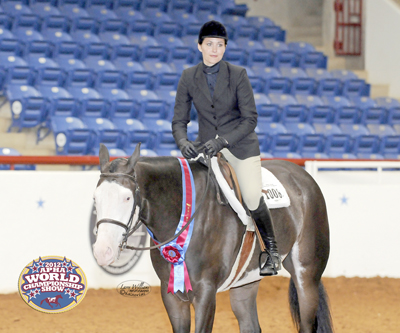 Brewer says she commends APHA for being diligent and listening to the trainers, exhibitors and owners and hiring qualified individuals to judge World shows.
Brewer says she commends APHA for being diligent and listening to the trainers, exhibitors and owners and hiring qualified individuals to judge World shows.
Brewer says that APHA, AQHA and NSBA are all doing a remarkable job educating their judges on what is considered desirable and un-desirable attributes in the Hunter Under Saddle and Western Pleasure rings.
“At this time, I think we are seeing a transition from wanting the 17.3 hand giant Hunter Under Saddle horses to not putting so much focus on the size and getting back to quality taking precedence over size,” she said. “ It is acceptable to have a 16-hand Hunter Under Saddle horse now where as a few years ago, they would of been penalized for being small by a lot of judges at any major show or futurity.”
Brewer said big horses were a popular trend but a lot of breeders, trainers and owners realized that bigger isn’t necessarily better and focusing is drifting from the size of a horse to the degree of talent they show in their movement.
“As a breeder, I definitely give much more credit to movement over size, no question,” she explains. “Granted a 15-hand hunt seat horse is not what I am breeding for, but the stud must be a quality mover first and foremost. Quality breeds quality and if the stud himself does not possess all three gears, have a certain look, and strong confirmation the chances are usually less likely that they will be strong sires. No matter who you are or how you do it, there is not an exact science for breeding show horses and there are always the exceptions. It’s always somewhat of a gamble to see what mares/studs cross well with each other and there are no guarantees.”
Brewer says that breeding Paint horses is even more tricky because of the registry’s white requirements.
“We must get the two inches of white to make them (foals) eligible for regular registry,” she says. “If the foal doesn’t meet the qualifying white requirements, it is only eligible to be Solid Paint-Bred which means they are not eligible to show with the regular horses and the value of them is barely what the stud fees are most of the time. So it is always a gamble, but even bigger with paints. But, as the old saying goes, the bigger the risk, the greater the reward if it all works out.”
The AQHA Handbook says: Hunters should move with long, low strides reaching forward with ease and smoothness, be able to lengthen stride and cover ground with relaxed, free-flowing movement, while exhibiting correct gaits that are of the proper cadence.
The quality of the movement and the consistency of the gaits is a major consideration. Horses should be obedient, have a bright expression with alert ears, and should respond willingly to the rider with light leg and hand contact. Horses should be responsive and smooth in transition. When asked to extend the trot or hand gallop, they should move out with the same flowing motion. The poll should be level with, or slightly above, the withers to allow proper impulsion behind. The head position should be slightly in front of, or on, the vertical.
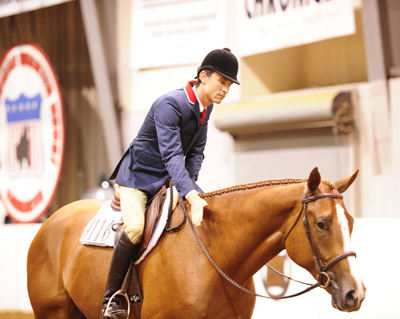 Scott Jones, of Boerne, Texas, was the 2012 Reserve Congress Masters Hunter Under Saddle Champion. He says that while bigger is not always better in the show pen, a Hunter Under Saddle contender should be an appropriate height for that class.
Scott Jones, of Boerne, Texas, was the 2012 Reserve Congress Masters Hunter Under Saddle Champion. He says that while bigger is not always better in the show pen, a Hunter Under Saddle contender should be an appropriate height for that class.
“It is an English class, therefore should be judged on the way it goes pertaining to how it would later jump a course,” he says. “Something too small would have a hard time making the distance required for its career later in life. While something to big will cover too much ground. We are looking for that perfect horse that is tall, well made, and can rock back and canter.”
Whether it’s a horse that will move on from the Hunter Under Saddle classes or not, Jones says the same traits are desireable. It just depends on the individual horse.
“A 16-hand Hunter Under Saddle horse is perfectly fine as long as it can cover the ground with a free flowing stride while remaining cadenced and balanced,” he says.” The same goes for a 17-hand horse.”
But, he says, that’s not always the case in terms of placings.
“I do sometimes feel there is credit given to a large, more mature horse that might not be the highest quality mover in the pen,” he says. “Most well trained horseman and judges find a way to look past that.”
When looking for a horse for himself or for a client Jones says movement always comes first.
“Then we decide if you can live with its size or if it’s a good match for the rider/horse combo and how that might look in the show ring,” he says.
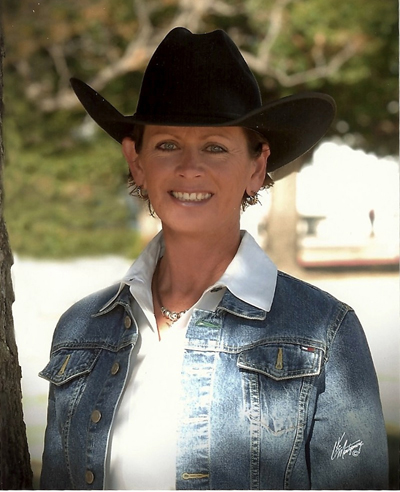 Jan Hoskin of Pinnacle, North Carolina, has been an AQHA judge for seven years and most recently judged the 2012 All American Quarter Horse Congress
Jan Hoskin of Pinnacle, North Carolina, has been an AQHA judge for seven years and most recently judged the 2012 All American Quarter Horse Congress
“It seems that the average, Hunter Under Saddle horse size these days is 16-17-hands. I think the days are gone when it was thought that bigger was better – now people are really specializing and breeding for quality of movement and height, rather than just height alone,” she says. “As a judge, movement and consistency is always priority over the size of the horse for me.”
Hoskin says there is no doubt that a taller, pretty horse is always an eye catcher but bottom line is they have to be a good mover, suited to their event.
“If there is a smaller horse that can out trot and canter a taller horse in the pen that would be my winner,” she says.



You must be logged in to post a comment Login